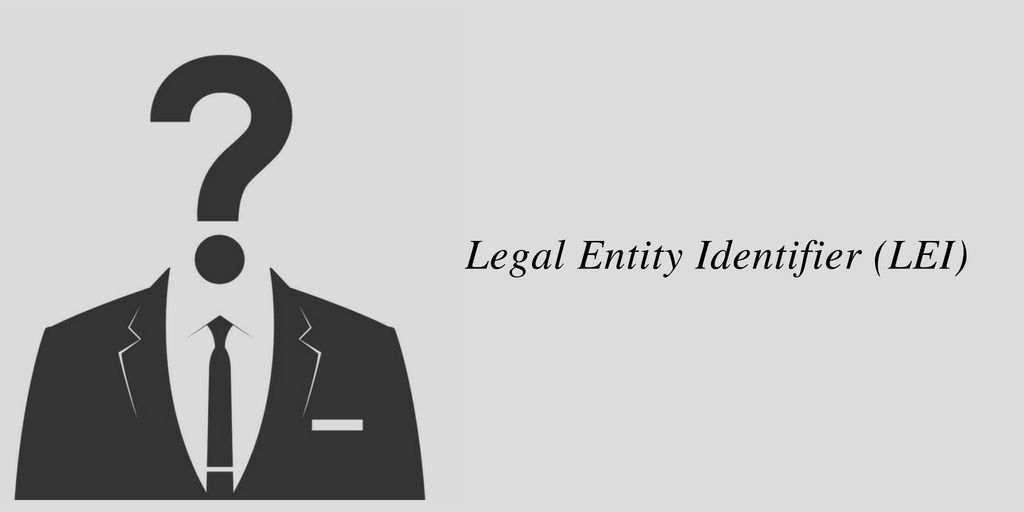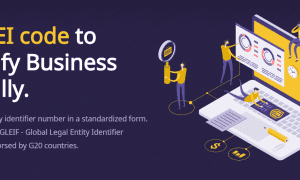LEI codes are used as unique identifiers for companies. These are crucial to the task of ensuring transparency in financial transactions.
LEI codes offer a reliable way to identify companies and organizations, aiding regulation and compliance.This guide explains LEI codes simply, detailing their role in the global LEI system supported by the Global Legal Entity Identifier Foundation (GLEIF). You’ll find out what they are, how they work, who needs them, and why they matter.
What Is an LEI Code?
An LEI code is a unique identification number given to companies and organizations that take part in financial transactions.Essentially, it is a legal entity identifier—a special ID card for a business that ensures each company has a distinct global identifier accepted around the world.The code has 20 characters made up of both letters and numbers and follows an international standard called ISO 17442.This code is linked to important information about the company, such as its official name, address, and country of incorporation, making it easier for regulators to enforce LEI requirements and ensure compliance.When banks, investors, or regulators look at an LEI, they can quickly verify the identity of a company.This clear identification helps reduce mistakes and fraud. Instead of dealing with many similar names or confusing abbreviations, everyone uses the same unique code as a global identifier to refer to a company.
A Brief History of LEI Codes
The idea for LEI codes started after the financial crisis in 2008, when shortcomings in regulation and compliance became apparent.Many problems arose because it was hard to know exactly which companies were involved in risky financial deals. Financial experts and regulators agreed that a program was needed to give every company a clear identity—a program that would later become a core part of the global LEI system.In 2011, world leaders and financial experts began working together to create the LEI system, with support from organizations such as GLEIF. Their goal was to improve transparency and make the financial system safer by ensuring every company could be easily and uniquely identified in line with LEI requirements.Today, LEI codes are an important part of many financial regulations around the world.
How Do LEI Codes Work?
LEI codes are designed to be both simple and secure while meeting essential regulation and compliance needs.
- The code has 20 characters and includes a built-in way to check that it is correct.
- When a company applies for an LEI, a trusted organization called a Local Operating Unit (LOU) performs a detailed check of the company’s information.
- The LOU verifies the company’s name, address, and other official details.
- Once the information is confirmed and the company meets all LEI requirements, the LOU issues the LEI code as part of a standardized program.
Because the LEI follows an international standard and forms a part of the global LEI system, anyone, including banks and regulators, can quickly look up the company details.This makes financial reporting faster and more secure.
Who Needs an LEI Code?
Many different types of organizations use LEI codes to meet strict regulation and compliance standards.
- Banks and brokers use them to know exactly who they are dealing with during transactions.
- Investment firms, asset managers, and companies that issue securities benefit from the legal entity identifier for accurate financial reporting and risk management.
In many countries, financial regulations now require these businesses to meet LEI requirements and have an LEI code.Large corporations and government bodies that operate across borders also often need an LEI, ensuring that every entity is covered under the same global identifier system.As the world of finance becomes more transparent, more organizations realize that having an LEI is essential for compliance and efficient global transactions.
Benefits of Using LEI Codes
Using an LEI code offers several important benefits for companies, regulators, and investors.First, it creates a standard way of identifying companies all over the world—a true global identifier that is part of the wider global LEI system.This standardization helps everyone track financial transactions better and manage risks more effectively.LEI codes also reduce errors.When every company has a unique legal entity identifier, there is less chance of mixing up similar names or using outdated information. This clear identification aids banks, regulators, and other oversight bodies in quickly spotting fraud or miscommunication, ensuring compliance with financial reporting standards.Another significant benefit is that LEI codes simplify reporting. Instead of listing a company’s name and address every time, firms can simply provide the LEI code.This streamlining contributes to a more efficient program for international trade, offering both regulation and compliance advantages.
How to Get an LEI Code
Getting an LEI code is a straightforward, step-by-step process.
- First, a company must choose a trusted organization known as a Local Operating Unit (LOU). These LOUs are authorized to issue LEI codes and verify company information in accordance with LEI requirements and global compliance standards.
- The company then needs to provide essential details such as its official name, address, and country of incorporation.
While one of the 36 LOUs gives out LEI Codes, there are still registration agents that are allowed to sell them on behalf of the LOUs. One of the most prominent ones is Leiservice, who stands as one of the main interfaces for acquiring and renewing LEI codes.Once the company submits its information, the LOU confirms that everything is correct.When the information is verified, the LOU issues the unique 20-character LEI code to the company.To maintain compliance with ongoing LEI requirements, the company must renew its LEI every year and update it whenever there is a change in its details.
Global Adoption and the Regulatory Environment
LEI codes have achieved global adoption as part of the wider global LEI system.Their use is driven by the need for clear and consistent identification in international financial markets and strict regulation and compliance measures.Many regions have implemented regulations that require companies to have an LEI, creating a universal program to support accurate financial reporting and monitoring.
- In Europe, rules like MiFID II and EMIR require many financial firms to use LEI codes to meet LEI requirements.
- In the United States, laws such as the Dodd-Frank Act include provisions to ensure that certain financial transactions are reported with a legal entity identifier.
Similar regulatory frameworks have been adopted across Asia, Latin America, and other parts of the world, making the LEI code a standard global identifier.This global acceptance makes it easier for companies operating in different countries. With one consistent identifier, businesses can manage cross-border transactions more efficiently.
Challenges in Using LEI Codes
Even though LEI codes offer many benefits, there are some challenges.One such challenge is keeping the information linked to an LEI current and accurate.Companies must update their details every year to meet LEI requirements and remain compliant.If a company delays updating its information, the data can quickly become outdated, complicating the process for banks and regulators who depend on accurate financial reporting.Another challenge is that smaller businesses might find the process of obtaining and renewing an LEI to be somewhat burdensome compared to larger organizations with dedicated compliance teams.However, as more companies and regulators recognize the importance of clear and standardized data, improvements in technology and program administration are likely to streamline the process in the future.
The Future of LEI Codes
Looking ahead, the role of LEI codes in global finance will likely grow even more significant.The legal entity identifier is already a key global identifier within the global LEI system, and emerging technologies like blockchain may further enhance how LEI codes are issued and managed.These advances could help automate compliance checks and reduce the administrative workload for companies while improving the accuracy of financial reporting.Moreover, there is potential for LEI codes to be used in areas beyond traditional financial transactions.For example, they could play an important role in supply chain management by clearly identifying every company involved in the production and distribution of products.LEI codes might also be adopted in corporate governance practices and in reporting environmental and social metrics, underlining their versatility as a program that promotes global transparency and accountability.
Additional Uses of LEI Codes
While LEI codes were originally created for financial transactions, they are now seeing broader applications.One growing area is supply chain management. When every company in a supply chain has an LEI, it becomes easier to track products, ensuring that quality and compliance standards are maintained throughout the process.In corporate governance, LEI codes help investors and regulators determine the complex relationships between companies, especially when one company holds shares in another. The unique global identifier clarifies these relationships, making it easier to assess risks and potential conflicts of interest.Additionally, LEI codes may soon be critical in reporting on environmental and social issues.As businesses are increasingly required to be transparent about their societal and ecological impact, having a standardized identifier simplifies the collection and dissemination of reliable data for financial reporting and beyond.
Frequently Asked Questions
Here we have answered some of the most commonly asked questions about LEI codes:
What does LEI stand for?
LEI stands for Legal Entity Identifier. It is a unique 20-character code used as a global identifier to clearly identify companies and organizations involved in financial transactions.
Why do companies need an LEI code?
Companies need an LEI code to clearly show who they are in financial transactions. This clear identification helps prevent mistakes and fraud, ensures compliance with LEI requirements, and simplifies regulation and reporting for banks and regulators.
How long is an LEI code and what does it include?
An LEI code is 20 characters long. It is made up of letters and numbers and follows an international standard (ISO 17442). The code is linked to important company details such as the official name, address, and country of incorporation, serving as a critical legal entity identifier.
Who issues LEI codes?
Trusted organizations known as Local Operating Units (LOUs) issue LEI codes. These LOUs verify a company’s information according to strict LEI requirements and compliance standards before assigning the unique code as part of a standardized program.
How often does a company need to renew its LEI code?
A company must renew its LEI code every year to ensure that the linked information remains accurate and up-to-date, thereby maintaining compliance with both regulatory guidelines and LEI requirements.
Is it difficult to obtain an LEI code?
The process of obtaining an LEI code is designed to be straightforward. A company provides the necessary information, which is then verified by a Local Operating Unit. Once verified, the company receives its unique 20-character code, a trusted legal entity identifier that facilitates efficient financial reporting and compliance.
How do LEI codes help in financial transactions?
LEI codes offer a clear and unique global identifier to every company involved in a transaction. This simplifies financial reporting, reduces errors and fraud, and assists banks and regulators in quickly verifying a company’s identity, thus enhancing overall regulation and compliance.
Can LEI codes be used for purposes other than financial transactions?
Yes, while LEI codes were created for financial transactions, they are now being used in other areas as well. They improve transparency in supply chain management, corporate governance, and even in reporting on environmental and social issues, acting as a fundamental component of the global LEI system.

































